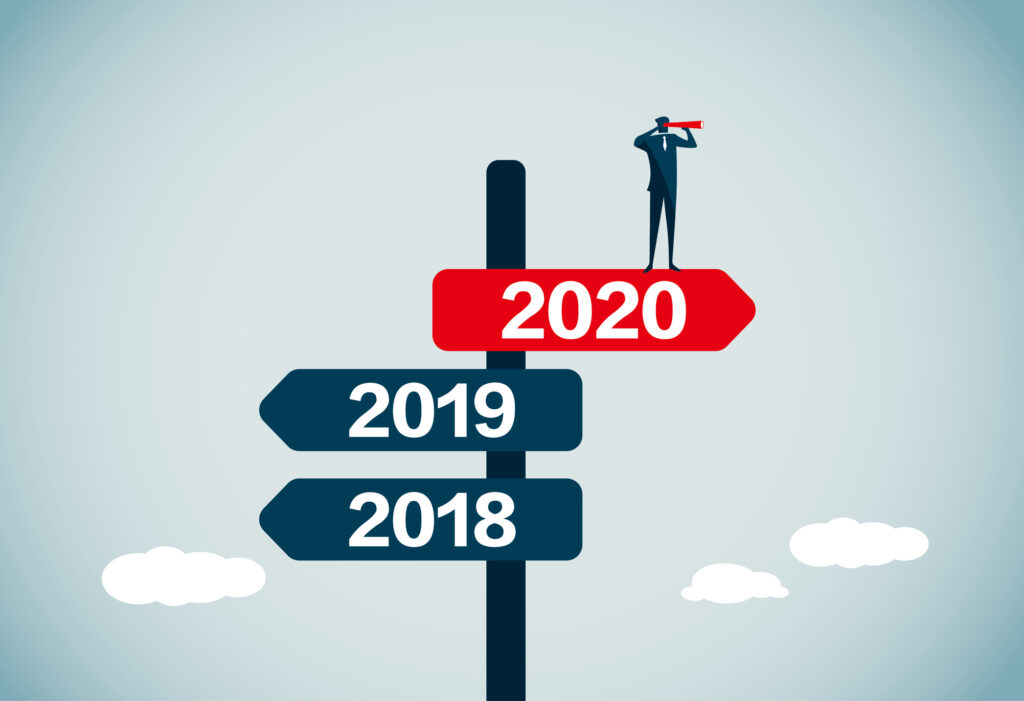We can often link particular ideas with a specific decade. For example, BritPop and Cool Britannia with the 1990s. In business and people management terms I would suggest that decade was about the rise of human resources, with the shift from Personnel to HR, the Ulrich model, and McKinsey’s War for Talent report, reinforcing the importance of aligning people with strategic business needs.
I would also link the 2000s to social media and the growing use of more conversational approaches throughout the employee lifecycle. And most recently, the 2010s with digital transformation, with HR teams increasingly questioning everything we do and how disruptive technologies might enable these things to be done in completely different ways.
So as we approach 2020, it is useful to speculate on what the 2020s may hold for us too. For me, whilst technology is clearly going to continue to dominate our focus, the real key to the decade is going to be strategic HR.
In a sense, therefore, the next decade will be a direct result of the last three, combining the strategic importance of people with how people can now be enabled differently through social approaches and digital tools.
Creating a people-centric HR strategy
Strategic HR clearly is not new, but I would argue that it is still not well understood or, at least, not well executed. Many HR people still talk about HR being a support function, and there is little understanding of what would be different if we were to truly be a strategic contributor instead. Most HR plans, even when called ‘strategies’ are just lists of activities with little attention paid to the impacts they are going to provide. And in a 2020 business grappling with new people challenges and digital opportunities that is no longer going to be enough.
So strategic HR needs to become more common and effective, but its focus also needs to shift. We now need to put the people working for our organisations, not just the commercial activities of our businesses, at the centre of our HR strategies and plans.
This is about creating new strategic value through what we do in HR. Not just supporting the business by aligning HR activities with the business, but enabling the business to be more strategically successful by enabling new people and organisational capabilities.
This need for people-centric approaches is not that new either. However, the zeitgeist around this has strengthened considerably over the past five to 10 years. Indeed, I would almost argue that if you still think you need to build your HR strategy mainly around the needs of your business, you have not been paying enough attention!
10 signs of a shift towards people-centric HR strategy
Here are 10 key markers of this new approach:
1. Human-centred design / design thinking
Rather than just asking people what they need, or assuming we know what they need, organisations are now paying much more interest in how the people they interact with actually behave.
Together with insights from neuroscience and behavioural economics this has made business leaders much more aware of the need for people-first approaches and empathic behaviours.
2. Employee experience
The main output of the above trend in many organisations has been to seek to balance focus on process design with an interest in experience, particularly through the use of personas and journey maps.
We still usually need processes to scale our activities but the energy for this activity has shifted dramatically towards employees over the past few years.
3. The digital workplace
The increasing importance of the digital workplace should now be a major area of focus for most HR teams.
However, unlike most earlier technological requirements, use of the digital workplace is almost completely discretionary and this is forcing not just HR but also IT and other areas to think more about experience design and working with their people to enable higher levels of adoption.
4. Workplace design
Even though people often work virtually, the physical workplace is also becoming much more important, if only to ensure people have somewhere to connect and collaborate when they do visit the office.
But our colleagues in Property and Facilities have realised that doing this effectively also starts with understanding and engaging people, not with items of the workplace.
The shift is possibly seen most clearly in the rebranding of the British Institute of Facilities Management (BIFM) as the Institute of Workplace and Facilities Management (IWFM) last year. This change was made to reflect the joint responsibility of FM, IT and HR for the performance of people, enabled by technology and the workspace, within or away from the office.
5. Community management
HR may enable individual performance but increasingly we need to focus on the performance of groups. And we can only do this effectively in conjunction with colleagues in community management who know how to bring people together, cultivate deep and meaningful relationships and prioritise sharing, learning and co-creating together.
6. Agility
People are also working more extensively in horizontal, cross-functional teams, especially through the rapid uptake of agile ways of working, requiring people to take accountability for their own work and to manage this themselves. Many companies using agile are also still figuring out how to scale up this approach across the entire organisation.
[cm_form form_id=’cm_65a14c3f5da64′]
7. Self-organisation
Self-organisation also exists outside of agile as a trend in its own right, particularly with the inspiration of Frederick Laloux’s book, ‘Reinventing Organizations’, as well as the case studies shared by Corporate Rebels.
Partly through the availability of artificial intelligence based self-coaching tools, it is now much more feasible for teams and whole organisations to manage their own performance, and HR should be seriously interested in these opportunities.
8. Purpose and meaning
Business leaders are generally much more knowledgeable about the importance of meaning, purpose, values and culture. HR has a huge opportunity here to educate its colleagues about how culture can be developed to help shape the way that organisations work.
9. Commitment to multiple stakeholders
The US Business Roundtable redefined the role of the company towards serving the needs of multiple stakeholders. This recent commitment provides a new access point to start important conversations about the role of people in business. Possibly a similar opportunity exists in the UK in responding to the Financial Reporting Council’s requirements on assessing organisational culture.
9. Humanocracy
Innovation professor Gary Hamel’s new book on humanocracy is due out in January 2020. This seeks to help organisations do away with bureaucratic management and to develop environments that are fit for people to do their work in.
And who knows how they can do that? Through HR. (This book could be a worthwhile late Christmas present for your CEO?)
Given all the above shifts, can we, or our business leaders, still believe that business is possible without strategic, people-centric HR? 2020 has got to be the year we start making more of a fuss about the strategic contribution that people, and therefore HR, can provide. I, at least, am looking forward to it.








